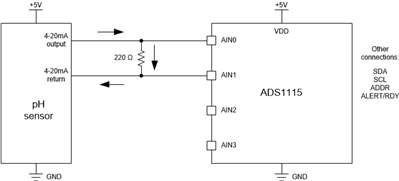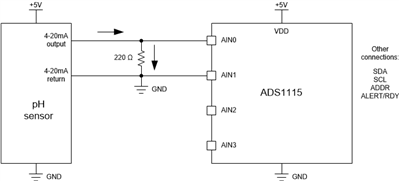Hi,
I am trying to measure pH using an Industrial 4-20 mA current loop sensor. I am using a shunt resistor to complete the loop and measure the voltage across the resistor using the ADS1115 and then read it through the Pi.
The reading I get using the ADS1115 is in the range of millivolts and I am assuming these are just garbage values. I tried measuring the differential voltage using a multimeter and I can get appropriate readings from the multimeter. I also measure the current using the multimeter and converted it to a voltage just to cross-check my value and it all makes sense.
I am not sure what is going in the circuit. I don't have any components other than the shunt resistor.
I did a quick test (Which helped me solve an issue in my previous project in which I was using a conductivity sensor): In that test, I tried measuring absolute voltage in each of the pins using a multimeter and I don't see any value, that is strange but as soon as I measure differential voltage I see the significant value. This is the question I am trying to find an answer so that it can help me develop the right circuit before I connect it to an ADC.
Any information will help me identify the issue and get a solution.
Thank you so much for your time.




